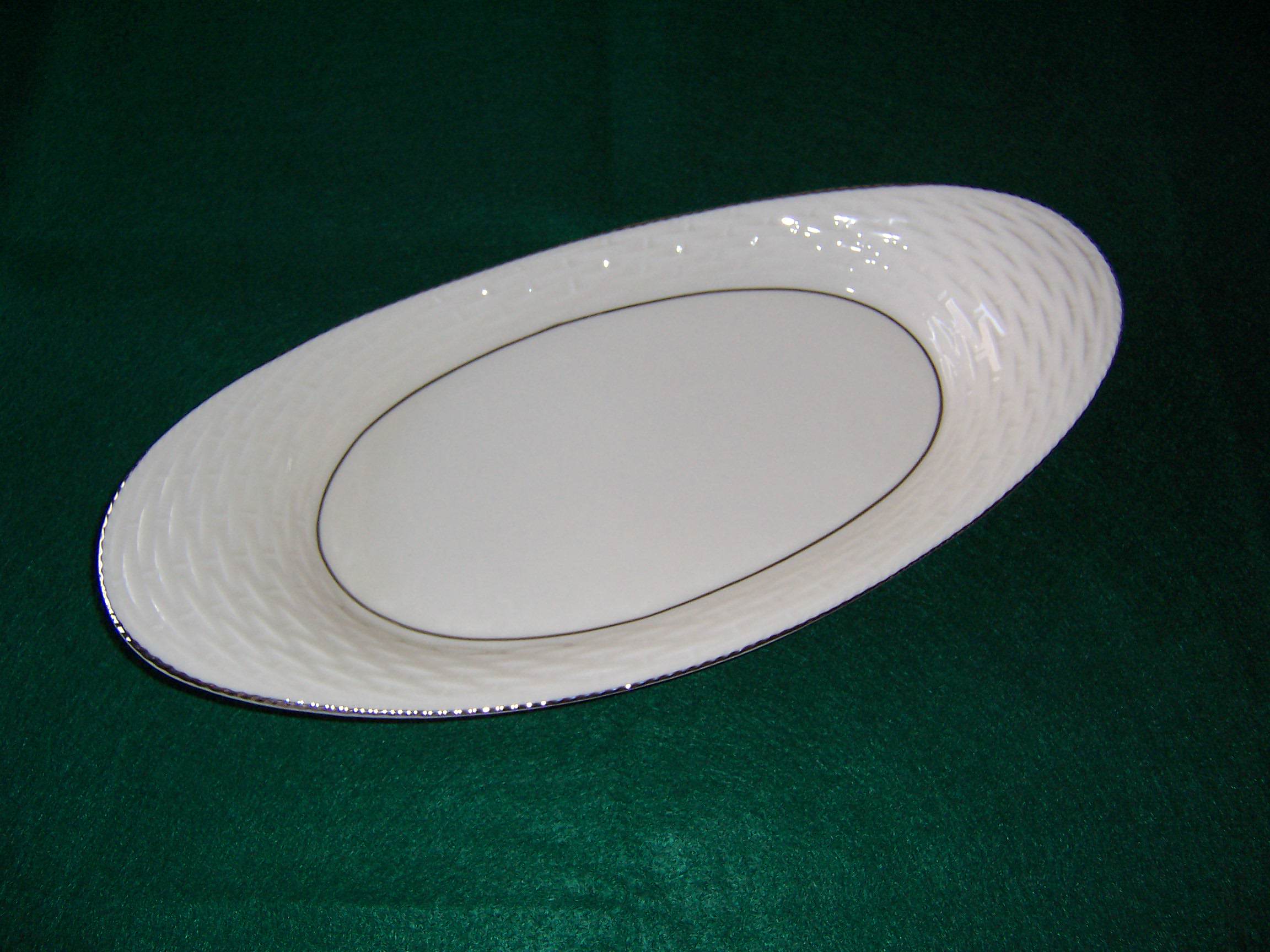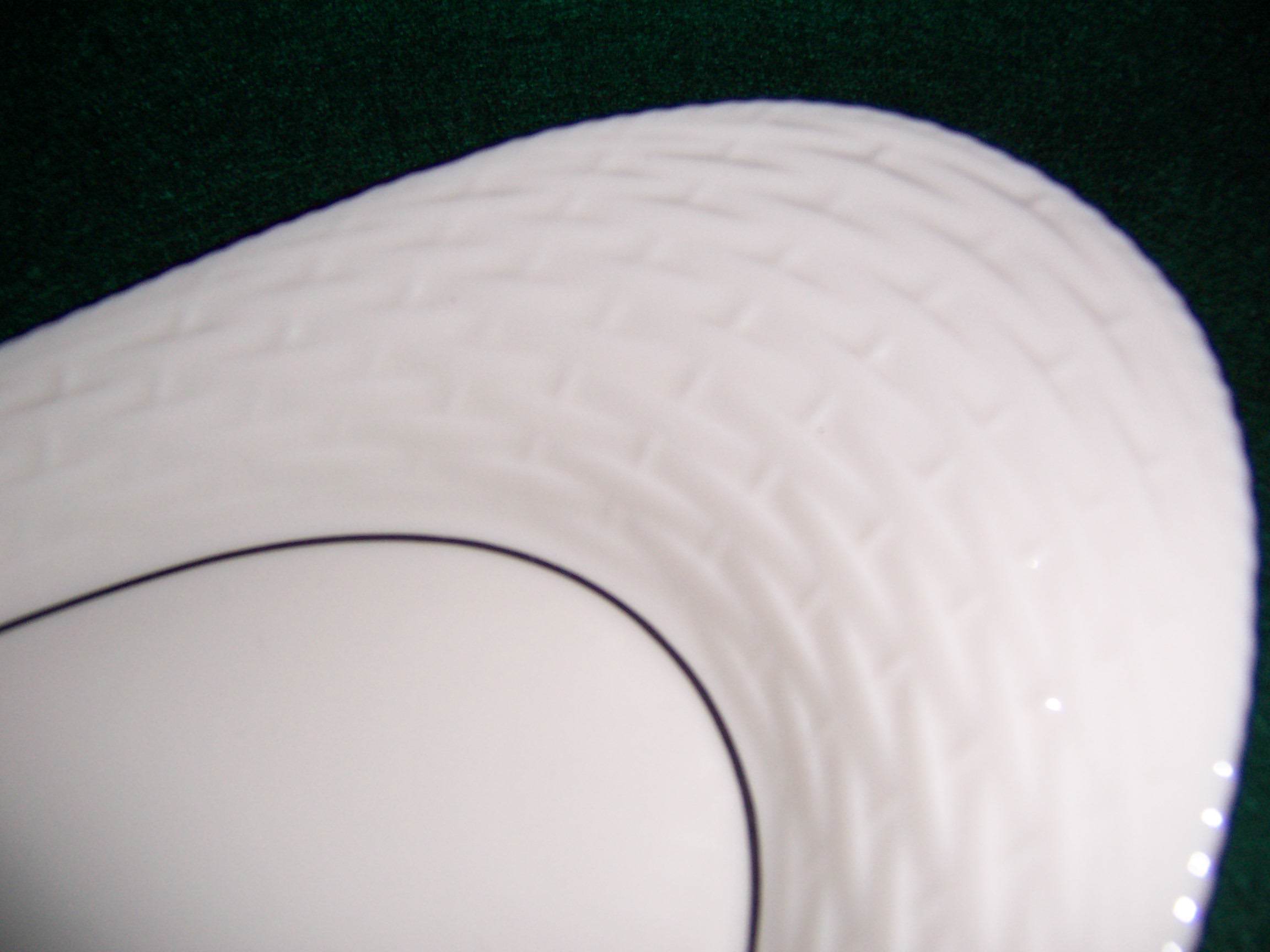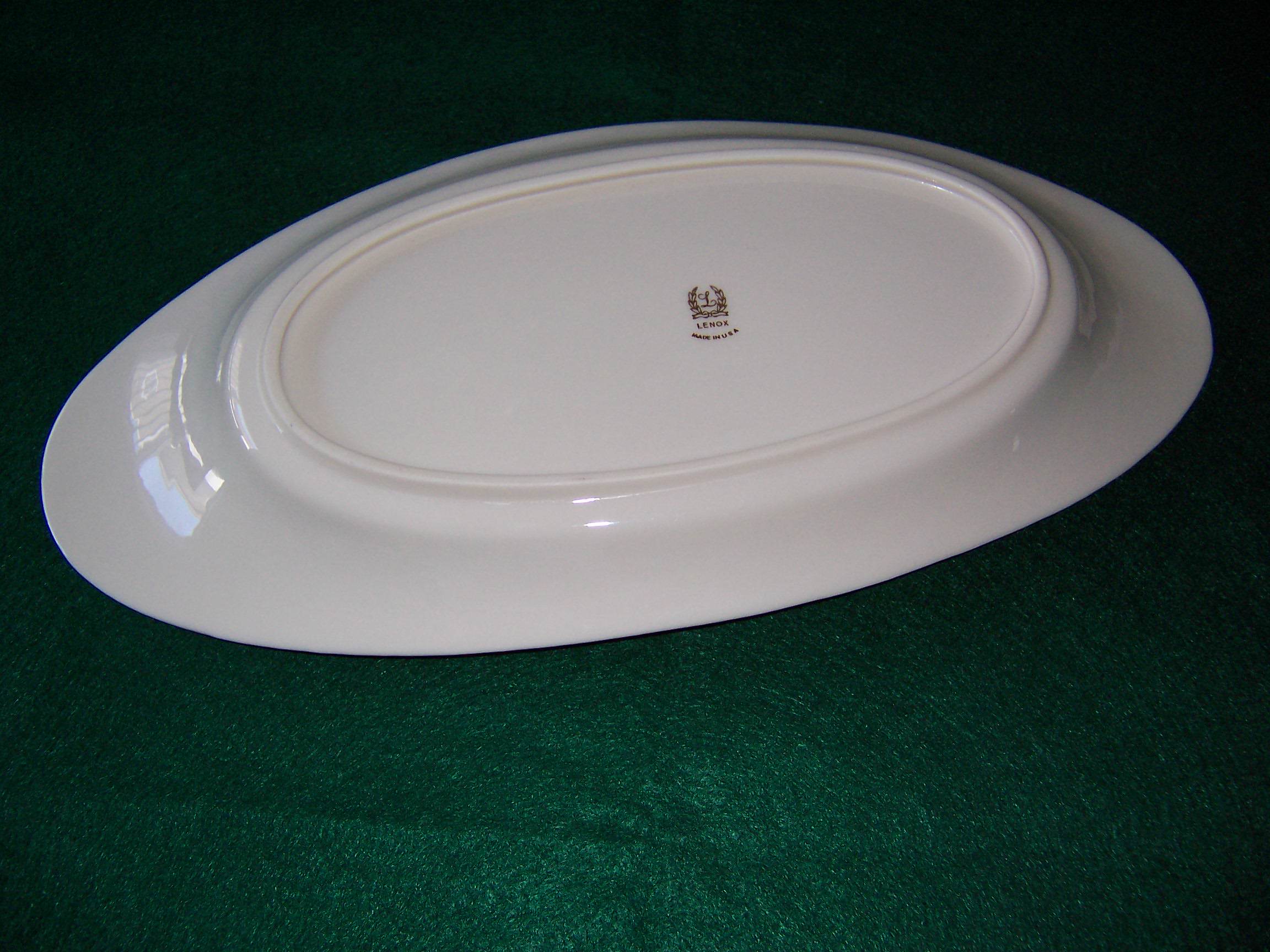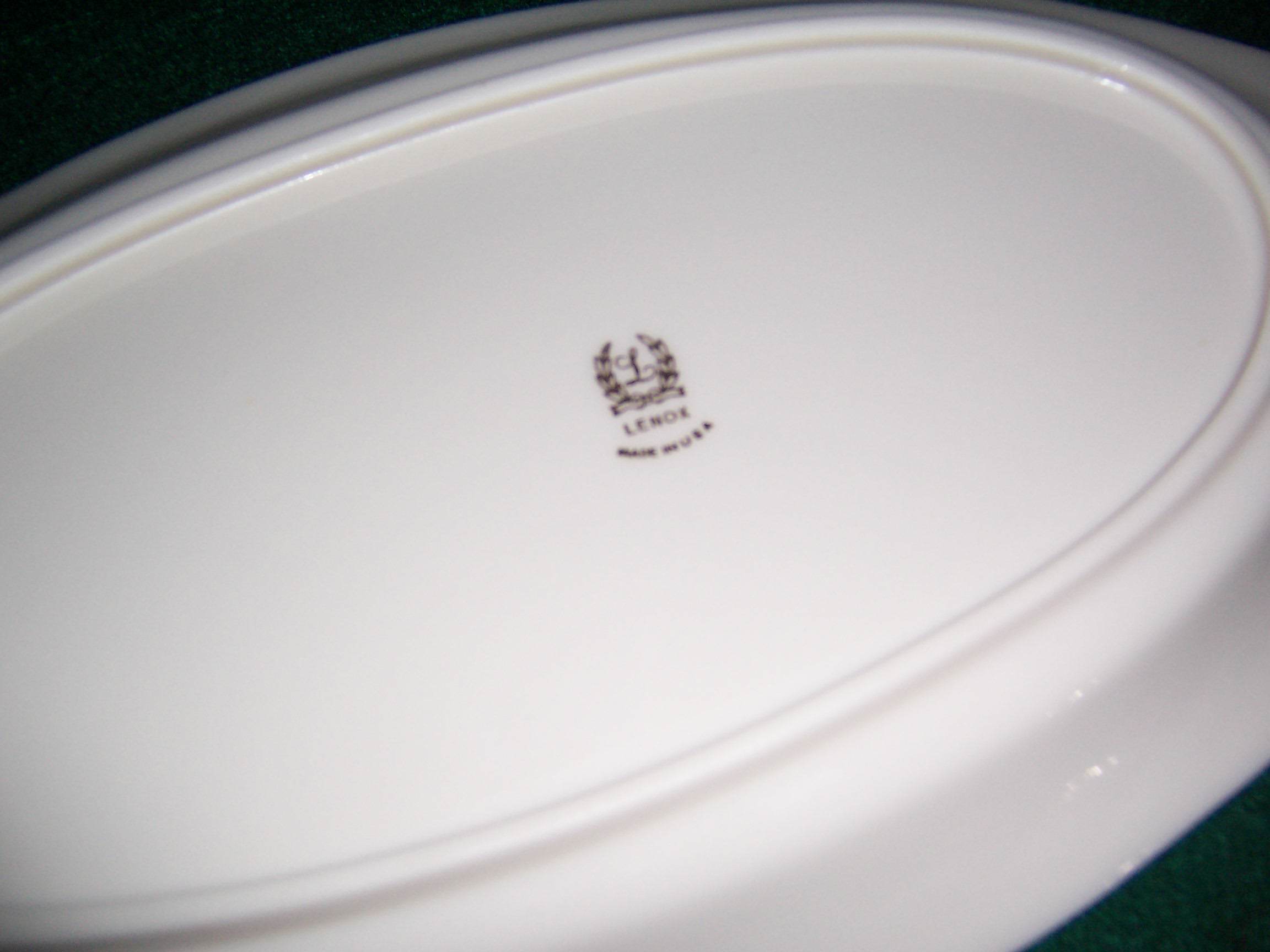Description
Lenox Madison Collection Bread Tray with Platinum Edges
13 5/8 in
History
Lenox was founded in 1889 by Walter Scott Lenox as Lenox’s Ceramic Art Company, Trenton, New Jersey. From the start it was organized as an art studio and not as a factory. It did not produce a full range of ceramic articles but rather one-of-a-kind artwares. The company at first had just eighteen employees. Lenox’s products were first displayed at The Smithsonian Institution in 1897.[1]
Lenox’s products became popular in the early 20th century when separate dining rooms and hostess parties became the new trend. Lenox then started making custom-designed, elaborately decorated dining plates. He faced European competition but commissioned famous American artists such as William Morley to decorate his plates. He gained success at this and eventually turned his attention to complete sets of dinnerware. In 1906 he changed his firm’s name from the Ceramic Art Company to Lenox Incorporated to show the widing scope of his products.[1]
Example of Lenox blank band bone china with floral inlay cir. 1932
Two of the first patterns Lenox produced were introduced in 1917, the Ming and Mandarin, which were eventually manufactured for over fifty years. Lenox products also became well known in the US thanks to Frank Graham Holmes, chief designer from 1905 to 1954, who won several artistic awards such as the 1927 Craftsmanship Medal of the American Institute of Architects and the 1943 silver medal of the American Designers Institute. Lenox pieces were chosen for display in 1928 by the National Museum of Ceramics in Sèvres, France — the only American porcelain to receive this honour.[2]
In the 1950s Lenox offered five-piece complete place settings, three-piece-buffet/place settings and individual tableware pieces. Its products was now within reach of the average US family. Lenox was the first company to develop a bridal registry.[3]
In 1983, Lenox was acquired by Brown-Forman Corporation.[3] Brown-Forman acquired Dansk International Designs and its Gorham Manufacturing Company division in 1991, which were incorporated as part of Lenox.
American by Design
On March 16, 2009, a group of investors led by Clarion Capital Partners LLC purchased the assets of Lenox and renamed the company Lenox Corporation. Lenox continues some manufacture of bone china dinnerware in its plant in Kinston, North Carolina, built in 1989. The 218,000-square-foot (20,300 m2) plant is situated on 40 acres (160,000 m2). Its manufacturing capabilities include enamel dot, etch, color and microwave metals. It was also this plant that manufactured the Bush White House bone china.
Presidential collection
See also: White House china
The Wilson service, introduced in 1918, was the first American-made presidential bone china service.
The Reagan service, introduced in 1982, was modeled on Woodrow Wilson’s and selected by Nancy Reagan.
Lenox was the first North American bone china to be used in the White House, and the company has since made tableware for six U.S. presidents. They are officially titled:
The Wilson Service: Designed by Frank Holmes. Delivered to the White House between August and November 1918. The pattern is a deep ivory border surrounding a brighter ivory body and two bands of matte gold encrusted with stars, stripes and other motifs. This first set of American made tableware of 1,700 pieces from Lenox cost $16,000.[3]
The Roosevelt Service: Ordered October 1934. It is described as patriotic, bearing a border of 48 gold stars, and the presidential seal in enamel colors on an ivory body.
The Truman Service: Consisting of 1,572 pieces, the pattern includes a border of celadon green flanked by an etched gold band and a 24 karat gold rim on an ivory body. Delivered in early 1952.
The Reagan Service: The pattern are bands of scarlet varying in width depending on the scale of the piece and are framed on each side with etched gold. The presidential seal, in raised gold, partially overlays the red border.
The Clinton Service: The pattern features a border of pale creamy yellow, and images of the White House facades. Each piece in the place setting is decorated with a different pattern, the motifs derived from architectural elements found in the State Dining Room, East Room, and Diplomatic Reception Room. No presidential seal appears.[4]
The Bush Service: Laura Bush first displayed this newest service on January 7, 2009. The porcelain place setting service features a green basket weave border based on a French dinner service believed to have been owned by James and Dolley Madison. The dessert plates replicate a laurel wreath found on the Madison’s Parisian c.1799-1805 dinner plates. The serving plates and the rim of other pieces also feature an eagle emblem inspired by an American Bald Eagle inlay found on the center drawer of the Massachusetts sideboard, believed to have been owned by Daniel Webster.
Lenox tableware is at the vice president’s official residence, more than 300 United States embassies, and more than half of the governors’ mansions. Dignitaries of the United States Congress and Department of State have received Lenox giftware.[1] The Metropolitan Museum of Art and Smithsonian Institution have as centerpieces in exhibitions of American decorative arts Lenox pottery. The Lenox backstamp is on about half of all fine porcelain dinnerware purchased since the 1950s in America. Beside collectibles, Lenox also produces tableware, serving pieces, vases and Department 56 items.[5]




